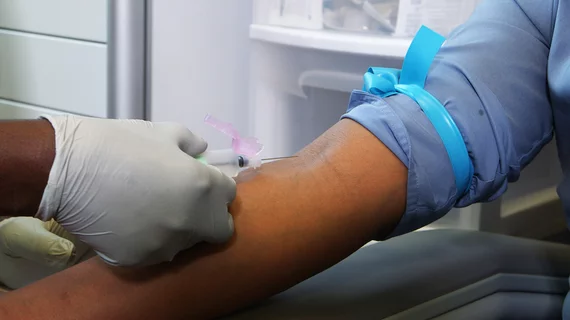Researchers have discovered a novel biomarker in stable, ambulatory patients with heart failure with preserved ejection fraction (HFpEF), a finding which may lead to earlier diagnoses of HFpEF.
The biomarker—called the cBIN1 score (CS)—effectively distinguished 52 patients with HFpEF from two control groups: healthy individuals and people without HFpEF but with risk factors for heart failure.
“Cardiac bridging integrator 1 (cBIN1) is a membrane-scaffolding protein in cardiomyocytes that organizes the dyad-containing microdomains at the transverse tubules that are responsible for the initiation and regulation of systolic and diastolic calcium transients,” principal investigator Robin Shaw, MD, PhD, with the Smidt Heart Institute and Cedars-Sinai Medical Center in Los Angeles, and colleagues explained in JAMA Cardiology.
“The level of cBIN1 is reduced in animal models of heart failure, as well as in human biopsy samples from patients with end-stage cardiomyopathy. Its blood availability makes it an attractive biomarker of cardiomyocyte remodeling.”
The authors studied blood samples from 52 consecutive patients with confirmed HFpEF from a Cedars-Sinai ambulatory heart failure clinic. They tested for cBIN1 plasma levels, which were used to calculate CS, as well as N-terminal pro-B-type natriuretic peptide (NT-proBNP)—another heart failure biomarker.
CS values were consistently and significantly higher among HFpEF patients (median 1.85) compared to healthy controls (-0.03) and control participants with heart failure risk factors (-0.08). CS also distinguished HFpEF patients from those without heart failure with an area under the curve (AUC) of 0.98 for both control groups. For comparison, NT-proBNP achieved an AUC of 0.93 for separating HFpEF from each control group. When the two tests were combined, the AUC was boosted to 0.99.
“In this study, we show that the CS, a biomarker based on the normalized reciprocal of plasma cBIN1 concentration, is more than 2 (standard deviations) higher in stable ambulatory patients with HFpEF compared with age-matched, sex-matched healthy volunteers, as well as individuals with heart failure risk factors but no HFpEF,” Shaw et al. wrote. “Notably, CS values are markedly increased even in those patients with New York Heart Association class I and II symptoms, whose NT-proBNP levels are within the age-appropriate normal ranges.”
The researchers also found individuals with CS values greater than 1.80 were 3.8 times more likely to have a cardiovascular hospitalization over one year of follow-up than those with lower values, after adjustment for age, sex, body mass index and NT-proBNP levels.
“While the findings of the study by (Shaw) et al. are promising, further studies with larger samples sizes, less selection bias, and more appropriate control groups (eg, patients with noncardiac dyspnea) will be necessary to validate the role of the cBIN1 score in the diagnosis and management of HFpEF,” wrote Sanjiv J. Shah, MD, a cardiologist with the Northwestern University Feinberg School of Medicine and associate editor of JAMA Cardiology, in an editorial comment. “Nevertheless, the study … has nicely highlighted the need for and potential role of cardiomyocyte dysfunction biomarkers in the diagnosis and management of HFpEF.”

